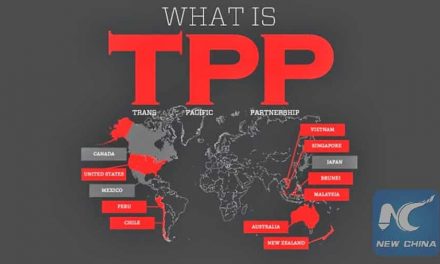Jane Kelsey: why the TPP can’t enter into effect without US and Japan final approval
Jane Kelsey, law professor at the University of Auckland, has an excellent summary of the legal and political conditions related to the TPP.
It is crucially important to know that without final approval by both the US and Japan, the TPP cannot reach the 85% GDP threshhold and enter into force, because they each comprise more than the 15% of aggregate GDP of TPP signatories. See the summary below.
There are three different ways the TPPA could come into force and bind some or all of the signatories.
1. If all original signatories complete their domestic processes to approve the agreement coming into force and notify the Depositary in writing within two years of signing, the TPPA comes into force 60 days after the last country notifies.
2. If not all original signatories have notified completion of their processes after two years, but at least 6 have done so, and they account for at least 85% of the combined GDP of the original signatories (as of 2013), the TPPA would come into force after 60 days (that means 2 years plus 60 days after signing).
3. If 2 years passes without the second option being met, the agreement comes into force 60 days after the date when 6 or more parties comprising 85% of GDP have notified. That formula means the US and Japan must be originating parties. Just two additional larger countries (Canada, Australia, Mexico) would be enough to meet the threshold of 85% of shared GDP. Poor and small countries are virtually irrelevant.




